B
L
I
S
T
E
R
TechSolution
The reason why. How to be prepared for future challenges.

The primary and secondary packaging of drugs might sometimes get separated, for example, along the supply chain, during distribution or once in the hands of the actual consumer. If the blister is separated from its original box, which is considered as product manipulation, this could be potentially dangerous for the patient’s health. As a result, and despite all the investments made by companies in terms of secondary packaging traceability, the primary packaging of drugs is still at risk of counterfeiting. Another great advantage to serializing single doses is the new frontier of reading drug information through electronic leaflets, which patients can simply scan on their smartphone. Digital drug leaflets allow patients to very easily access the information even if it has been separated from its box. Blister serialization and carton aggregation is the answer to this challenge.
Primary packaging serialization, the missing piece of the puzzle
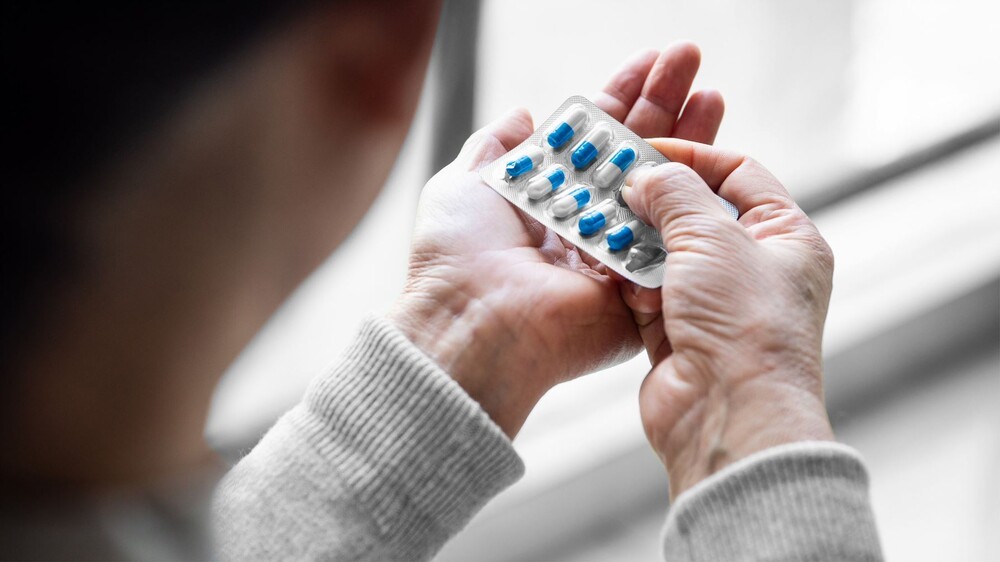
Product identification is a prerequisite in the healthcare industry. Although this vital condition is presently respected, from the carton through to the pallet, the same cannot be said for the primary packages, such as blisters. There are three main areas where a blister serialization solution becomes strategic:
1. In hospitals: where the drugs are received in big cartons and later separated into single boxes in various phases.
2. In pharmacies: where the drugs can be sold in single doses.
3. End users: it is important to remember that people often cut off a portion of the blister to carry with them at all times for personal use.
1. In hospitals: where the drugs are received in big cartons and later separated into single boxes in various phases.
2. In pharmacies: where the drugs can be sold in single doses.
3. End users: it is important to remember that people often cut off a portion of the blister to carry with them at all times for personal use.
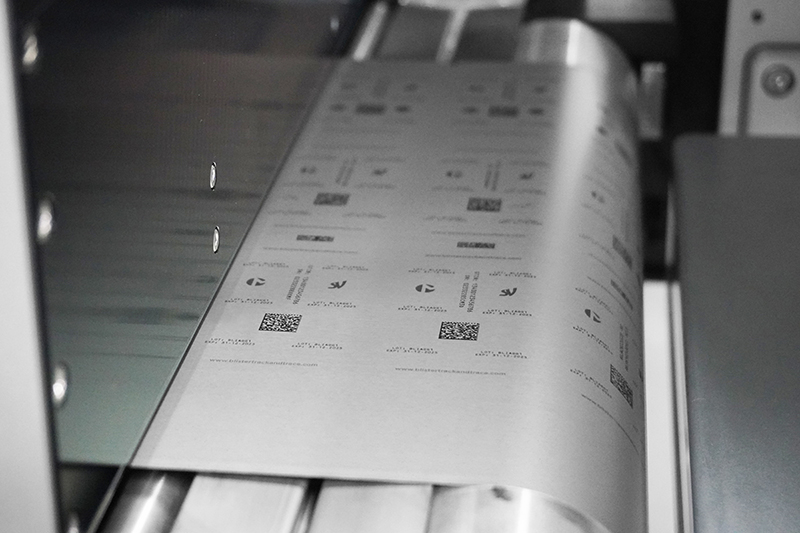
The new frontiers of digital printing
The healthcare industry is presently going through an important transformation process: the drugs are changing very quickly and are more and more subject to marketing requirements. In this scenario, aluminum foil digital printing optimization offers the possibility to meet customer needs.
The advantages?
Fewer production costs, greater flexibility, reduced warehouse stock and more independence from third party suppliers: these are just some of the winning points of the digital printing technology, which compared to traditional flexo printing, is currently the best alternative.
The advantages?
Fewer production costs, greater flexibility, reduced warehouse stock and more independence from third party suppliers: these are just some of the winning points of the digital printing technology, which compared to traditional flexo printing, is currently the best alternative.
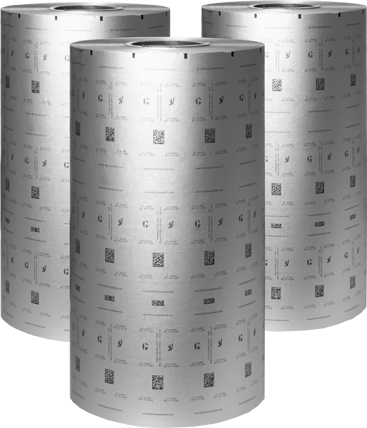
In line or off-line digital alu reel printing?
There are different ways to print your neutral alu reels in-house: directly in line, with the printer installed on the blister thermoformer or using a Roll2Roll machine.
Concerning in line printing, the solution allow to print the blister alu foils at high speed (up to 75 m/min) with maximum flexibility, not only for serialized batches but also to print something that is not serialized.
In the second scenario, the Alu reels are printed off-line on a Roll-to-Roll machine. You can print whatever you need in advance, and stock it in the warehouse without depending on a third-party supplier.
SEA Vision software can handle both scenarios.
Concerning in line printing, the solution allow to print the blister alu foils at high speed (up to 75 m/min) with maximum flexibility, not only for serialized batches but also to print something that is not serialized.
In the second scenario, the Alu reels are printed off-line on a Roll-to-Roll machine. You can print whatever you need in advance, and stock it in the warehouse without depending on a third-party supplier.
SEA Vision software can handle both scenarios.

Smart tracking principles
The secret of the R2R solution is “smart tracking”: a digital reject management system allows the Roll-to-Roll machine to work continuously, even when a defect is detected during the printing process. When the SV system detects an error, it is no longer necessary to stop the machine, eliminate the wrong foil portion and splice the material; instead, the machine will print continuously and rewind the Alu foil: this information, will be later read during the packaging process directly on the blister thermoformer. The solution is guaranteed by generating and printing a tracking code on every blister row. This tracking code called “index code” and printed on the side of the reel, contains the good/wrong information data for every blister row. The Index code is read by a camera situated on the blister thermoforming station: by integrating the software with the machine and the Software logics, and perfectly combining the automation commands, when a wrong index code is detected, the system closes the tablet feeder for that specific row and rejects the blister without wasting tablets. This amazing feature saves product and avoids waste.
Inspection technology developments
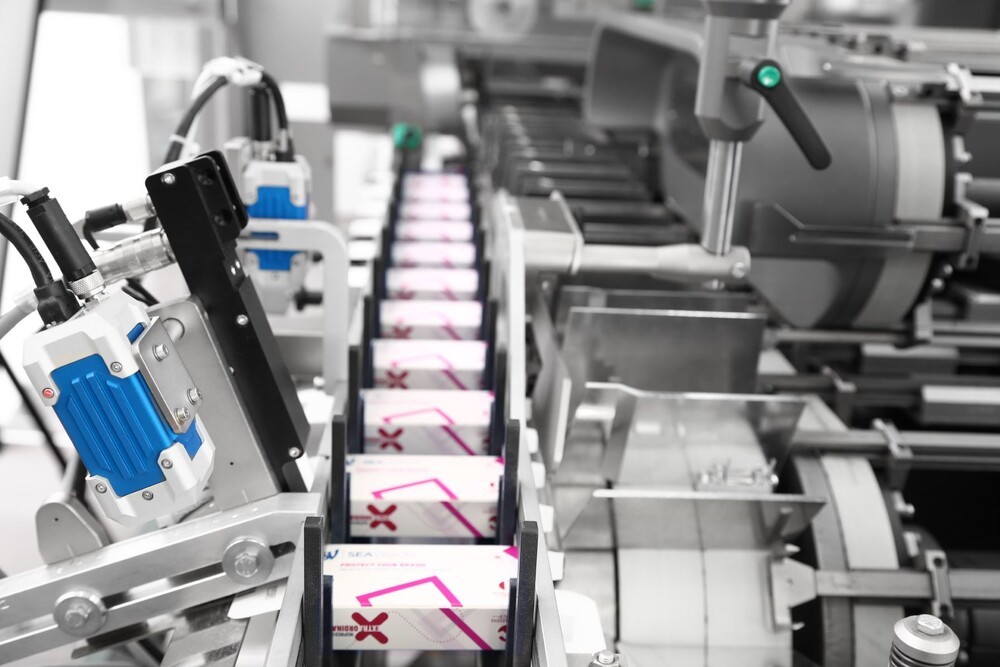
For this project, SEA Vision has focused its R&D activities in 2 directions: choice of best hardware and development of latest generation software.
Regarding hardware, SEA Vision has found that the Contact Image Sensor with CoaXPress interface is the most appropriate tool for the needs of this technological challenge. Integrated into the SEA Vision Tracker, this sensor allows you to:
• Homogeneously inspect web up to 367mm with high resolution (600dpi).
• Inspect foils of a wide range of materials.
• Achieve high image transfer speed, reaching line speeds of up to 75 m/min.
• Minimize the physical footprint in the machine thanks to an integrated lighting system and CIS customization for the trickiest of reflecting surfaces.
• Cancel the shear deformation effect on the image to optimize print quality control, thanks also to continuous foil dragging.
As for software development, SEA Vision has created new algorithms for reading codes and controlling print quality and has further developed its own application in order to take full advantage of the performance of the available threads. An important step was to develop the print quality verification algorithm in gray and color levels. Last but not least, to meet high-speed requirements, the aim was to reach top levels of performance in terms of reading the ECC200 codes, without affecting the ANSI Grading control, in compliance with ISO-IEC 15415, ISO-IEC TR 29158 and ISO- IEC 16022.
Regarding hardware, SEA Vision has found that the Contact Image Sensor with CoaXPress interface is the most appropriate tool for the needs of this technological challenge. Integrated into the SEA Vision Tracker, this sensor allows you to:
• Homogeneously inspect web up to 367mm with high resolution (600dpi).
• Inspect foils of a wide range of materials.
• Achieve high image transfer speed, reaching line speeds of up to 75 m/min.
• Minimize the physical footprint in the machine thanks to an integrated lighting system and CIS customization for the trickiest of reflecting surfaces.
• Cancel the shear deformation effect on the image to optimize print quality control, thanks also to continuous foil dragging.
As for software development, SEA Vision has created new algorithms for reading codes and controlling print quality and has further developed its own application in order to take full advantage of the performance of the available threads. An important step was to develop the print quality verification algorithm in gray and color levels. Last but not least, to meet high-speed requirements, the aim was to reach top levels of performance in terms of reading the ECC200 codes, without affecting the ANSI Grading control, in compliance with ISO-IEC 15415, ISO-IEC TR 29158 and ISO- IEC 16022.
4.0 data management on the line by yudoo
A multi-level track and trace architecture integrated with all existing company systems is recommended to automatically manage the flow of information. Therefore, the line is integrated and managed by the 4.0 Pharma Software Suite Yudoo, which is a more comprehensive 4.0 infrastructure that allows total process digitalization.
Marchesini Group: Integra 720V, the integrated, robotised line for packaging blisters in cartons

Integra 720V is a compact multilane blister line (up to three blister infeed lanes) with a completely balcony style structure, comprising two sections: a blister packaging machine that forms the blisters and places the products to be packaged into their cavities, and a cartoning machine that packages the blister in its carton. Integra 720V has an innovative pusher and counter-pusher unit, a rotary drum carton opening system to cope with very high speeds and an efficient leaflet picking and insertion system. The end result is a line able to produce up to 720 blisters (in Aluminium+PVC/PVDC/PET/aluminium and other materials) and up to 500 cartons/minute (with tuck-in or glue closure and many other combinations), which delivers very easy cleaning and size change functions since the product loading area is separated from the electrical and mechanical parts.
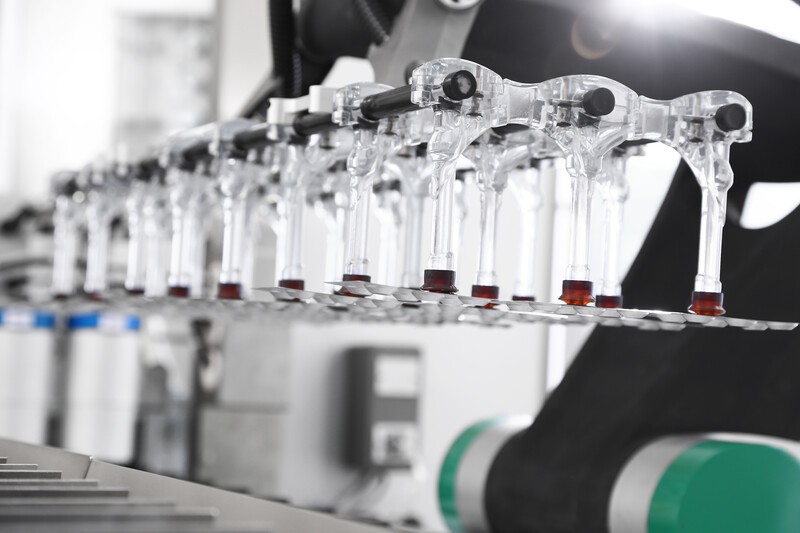
The two sections are connected by a Robocombi, which is a 3-axis robot fully integrated into the line and created entirely by the Marchesini Group Research & Development departments. This high-tech arm, which feeds the blisters into the product conveyor boxes, can be programmed to execute different stacking sequences, depending on the blister count set, and is controlled by software to automatically synchronise the transfer, tracking and stacking system. The two sections can be separated by a partition so that they can be included in various environment classes, and can operate independently, according to the customer’s needs.

After the first section consisting of a blister packaging machine, which forms the blisters and places the products to be packaged into their cavities, the blisters are inserted into the cartons by the continuous motion high speed horizontal cartoner, MA 500, of Marchesini Group. This solution features two separate combined units, pusher and blade, which insert the product into the carton with faultless precision, even at high speeds.

Finally, the line is completed by the BL-A525 CW labelling machine complete with incorporated check-weigher for dynamic carton weighing and control. This machine is suitable to apply self-adhesive vignette and tamper evident seals on cartons, at high production speeds.
SEA Vision S.r.l. a socio unico, via Treves 9E - 27100 Pavia (Pv) Italy VAT N. IT01638840189 Corporate Registration Number: PV-199274 Share Capital: Euro 100.000